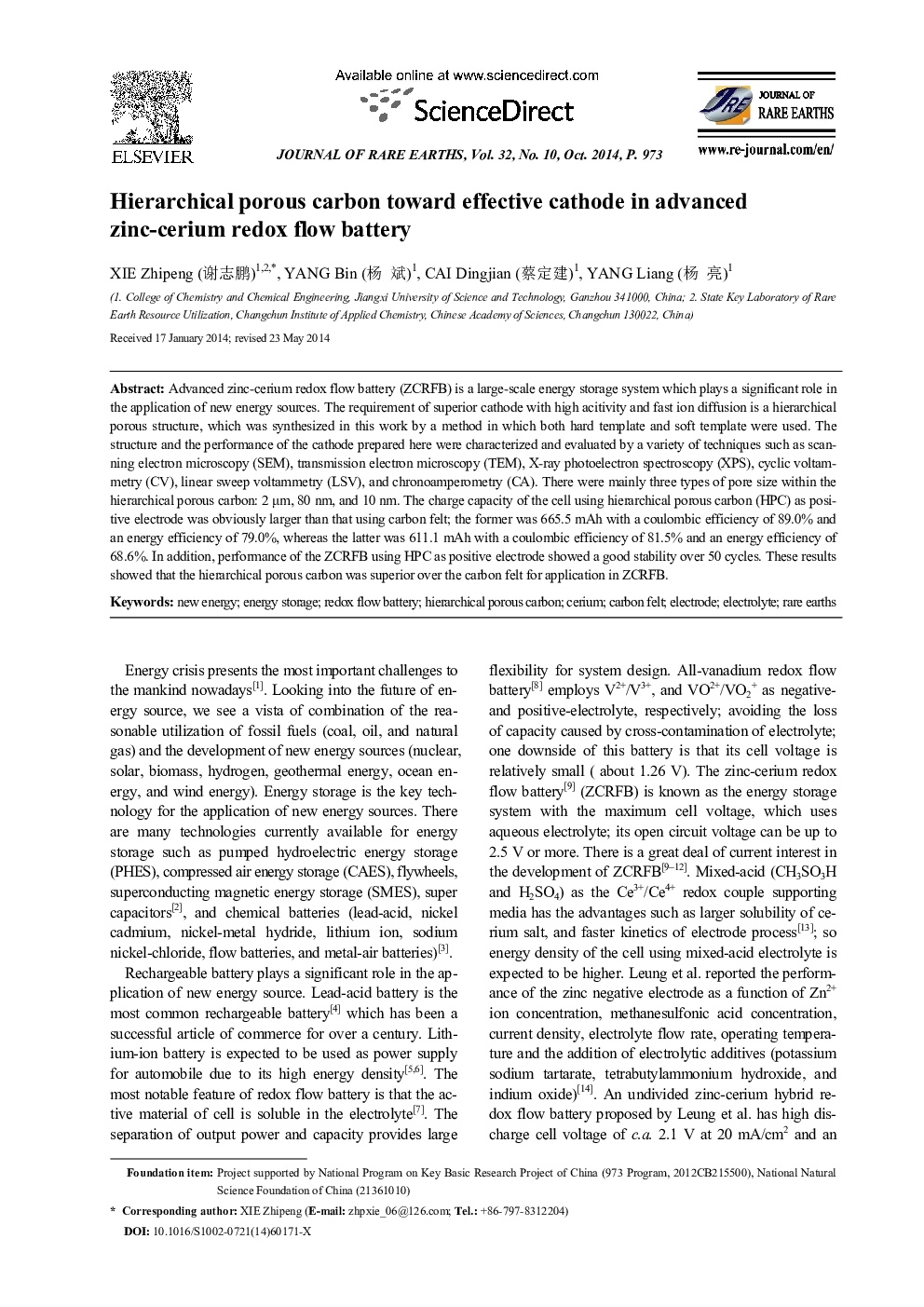| Article ID | Journal | Published Year | Pages | File Type |
|---|---|---|---|---|
| 1261928 | Journal of Rare Earths | 2014 | 6 Pages |
Advanced zinc-cerium redox flow battery (ZCRFB) is a large-scale energy storage system which plays a significant role in the application of new energy sources. The requirement of superior cathode with high acitivity and fast ion diffusion is a hierarchical porous structure, which was synthesized in this work by a method in which both hard template and soft template were used. The structure and the performance of the cathode prepared here were characterized and evaluated by a variety of techniques such as scanning electron microscopy (SEM), transmission electron microscopy (TEM), X-ray photoelectron spectroscopy (XPS), cyclic voltammetry (CV), linear sweep voltammetry (LSV), and chronoamperometry (CA). There were mainly three types of pore size within the hierarchical porous carbon: 2 μm, 80 nm, and 10 nm. The charge capacity of the cell using hierarchical porous carbon (HPC) as positive electrode was obviously larger than that using carbon felt; the former was 665.5 mAh with a coulombic efficiency of 89.0% and an energy efficiency of 79.0%, whereas the latter was 611.1 mAh with a coulombic efficiency of 81.5% and an energy efficiency of 68.6%. In addition, performance of the ZCRFB using HPC as positive electrode showed a good stability over 50 cycles. These results showed that the hierarchical porous carbon was superior over the carbon felt for application in ZCRFB.
Graphical AbstractPerformance of zinc-cerium redox flow battery (a) Cell-voltage profile with respect to cell capacity during a charge/discharge process; (b) Cell charge capacity and discharge capacity for 50 cyclesFigure optionsDownload full-size imageDownload as PowerPoint slide
